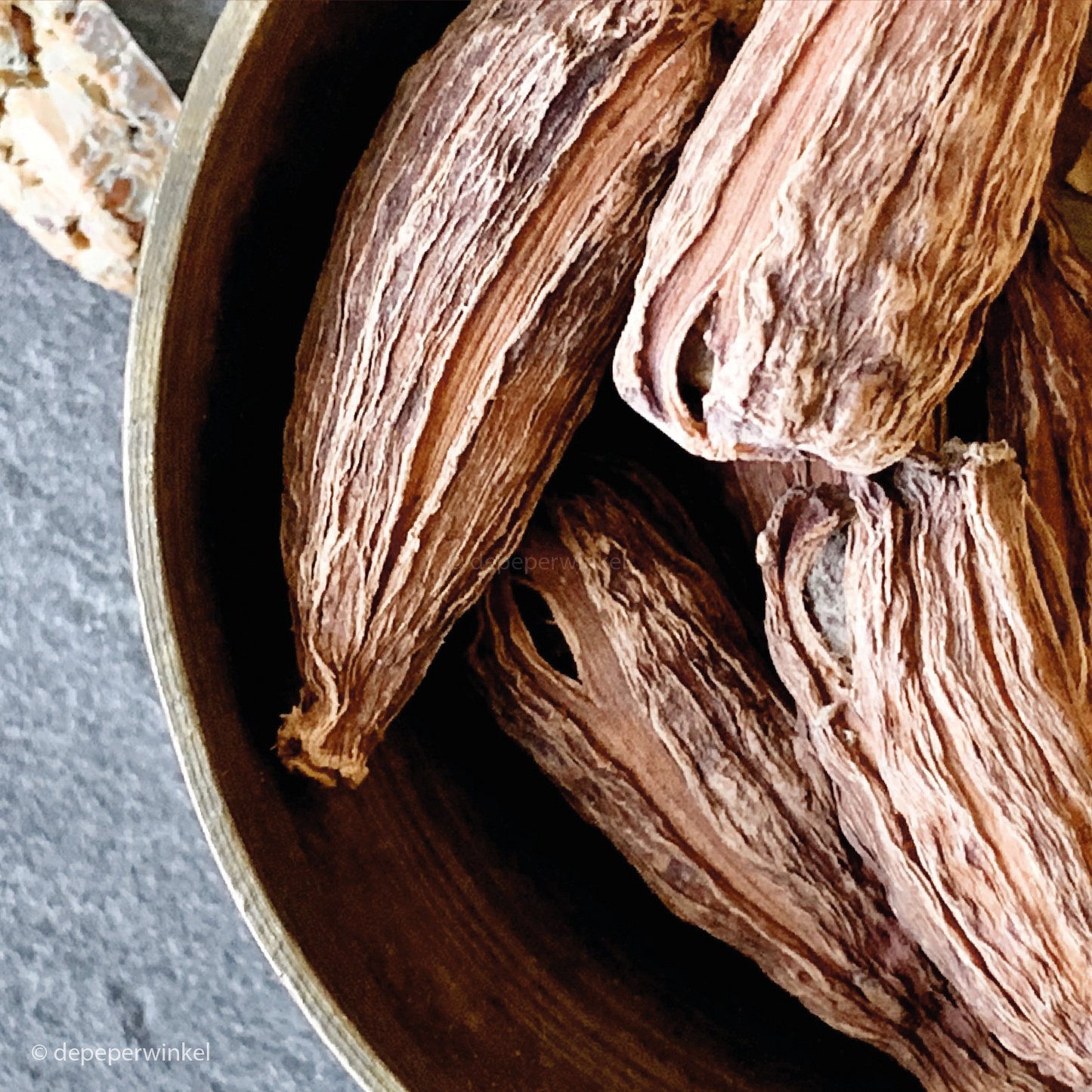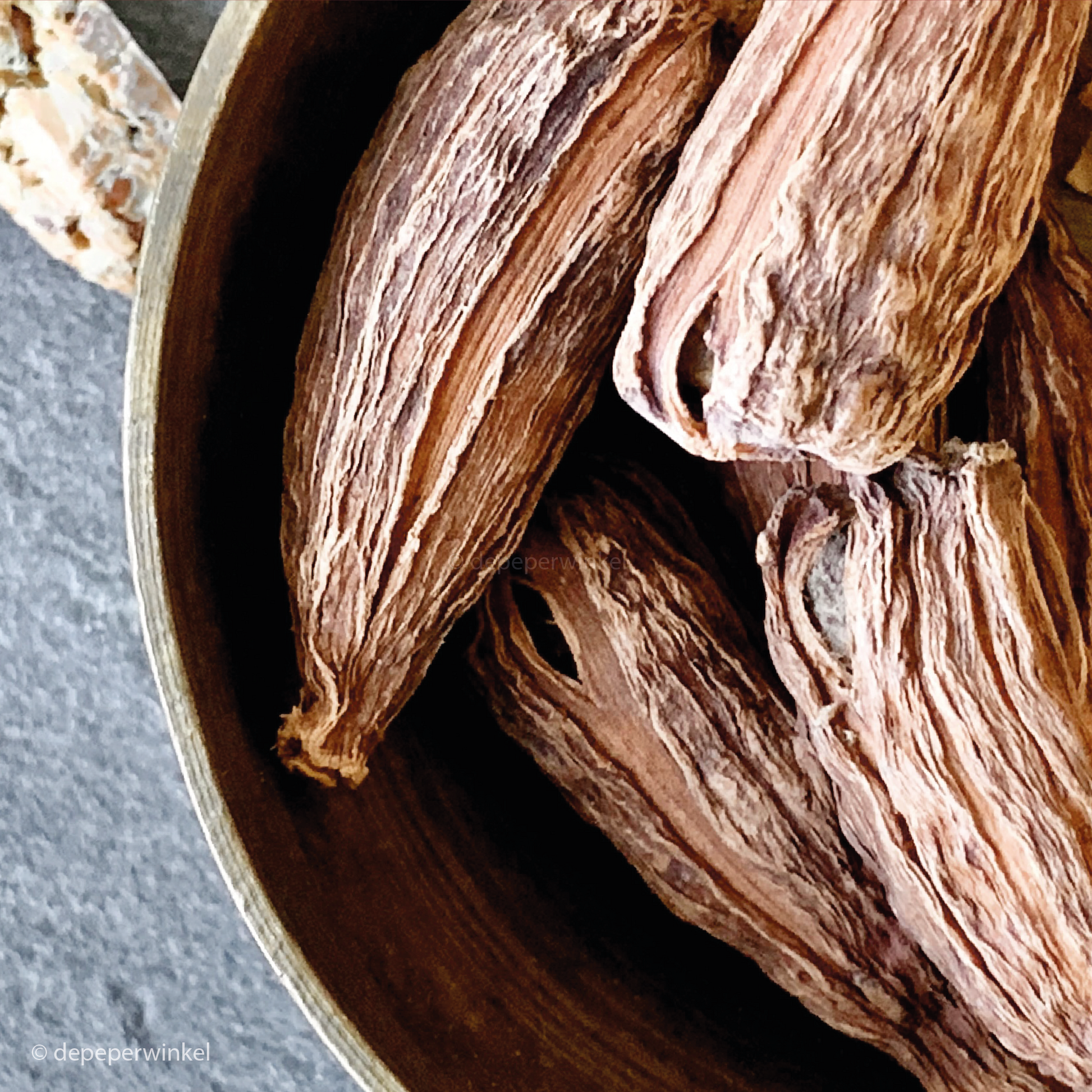FOOD&SPICES
Korarima (grain)
Korarima (grain)
In stock
Unable to load availability for pickup
Korarima is the seed of the plant of the same name, which is called cororima in Ethiopia. It is also called "false cardamom." It is an essential ingredient in famous Ethiopian spice blends such as berbere and mitmata.
The korarima plant belongs to the plant genus Aframomum, which has about fifty species that all grow on the African continent, is a ginger-like plant, just like mbongo and grain of paradise. The plant grows like all plants in the ginger family in a warm, moist environment and like some shade. Naturally comes korarima for an altitude of 1,700-2,000 meters.
The plant grows to about It grows to a height of two meters and has elongated, pointed leaves, like bamboo. Close to the ground, trumpet-shaped flowers appear from January to September, seemingly emerging directly from the ground. They grow on stalks on the underground rhizome.
The White to light purple flowers often fall off on the same day they appear, making way for large, reddish-brown pods. The timing of this varies by location. For example, the flowering period in Kefa, Ethiopia, is from June to July. The pods ripen there in September. and October.
It takes three years for a plant to produce a usable harvest. From then on, the plant can be harvested for four consecutive years. The pods are picked when ripe. They contain reddish-brown seeds in a jelly-like liquid. Only a small portion is sold fresh; some is dried in the sun.
Korarima is widely available in markets in the Horn of Africa, and is quite expensive there compared to other spices and herbs. Korarima is a popular spice in West African cuisine, o.a. in Cameroon and Senegal. Related spices include grain of paradise (Aframomum melegueta) and Madagascar cardamom (Aframomum angustifolium). The former is quite common, the latter very rare.
Smell and taste
In korarima the flavors of green and big (violet) cardamom united. Korarima is a bit sweeter than green cardamom, and like black cardamom, it has a menthol aroma. The aroma is otherwise characterised as that of nutmeg, hence the alternative name nutmeg-cardamom.
The seeds contain 1-2% essential oil, which contains the main flavour components
- alpha-humulene, (31.3%), 'hoppy' as in hops
- humulene oxide (26.4%),
- caryophyllene oxide (17.9%), spicy and woody, like cinnamon and cloves
- beta-caryophyllene (8.5%), sweet, woody, also in cloves, and
- linalool (5.7%), responsible for the scents of rosewood and coriander
Korarima is less
Usage
Except in combination with other spices in spice blends such as berbere and mitmata, a mixture of bird's eye chili, korarima and cloves. Korarima is used in Ethiopia both fresh and dried in wots, in numerous sauces, such as chow, but also as a flavouring in (Ethiopian) coffee, tea and bread.Other applications include:
- niter kibbeh (spiced butter),
- kitfo, raw minced meat with mitmata,
- shirowat, a puree of chickpea flour and
- maafe, West African chicken in peanut sauce
Grind or crush the seeds shortly before use, after briefly roasting them first.
Korarima's unique aromas make it a fantastic botanical for your gin and tonic, with the pleasant sharpness of paradise grain.
Features:
- 100% seeds of the Aframomum corrorima
- origin: Ethiopia
Assortment
- available in glass (60 grams), stand-up pouch and test tube (10 ml)
- larger quantities on request
Gift wrapping
- The jar is available in a tasteful gift packaging, consisting of a cube box filled with black tissue paper.
- For an overview of our gift packaging, please refer to the gift packaging section.
General advice
- grind Korarima at the last minute to maximize the aroma - preferably toast briefly first
Save:
- keep korarima in closed packaging
- preferably store in a dark, dry and cool place
- best before November 2027 (11-2027)
- This expiration date is an indication
Batch number
The batch number helps us track which batch an item originates from. It's listed on the packing slip and invoice.
Share











